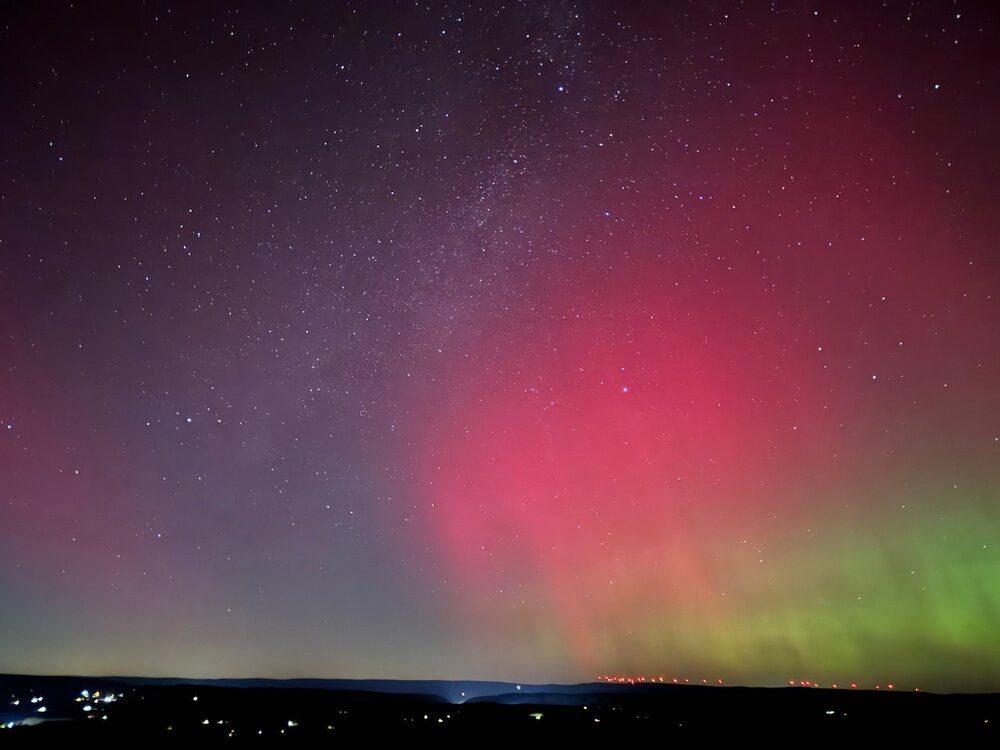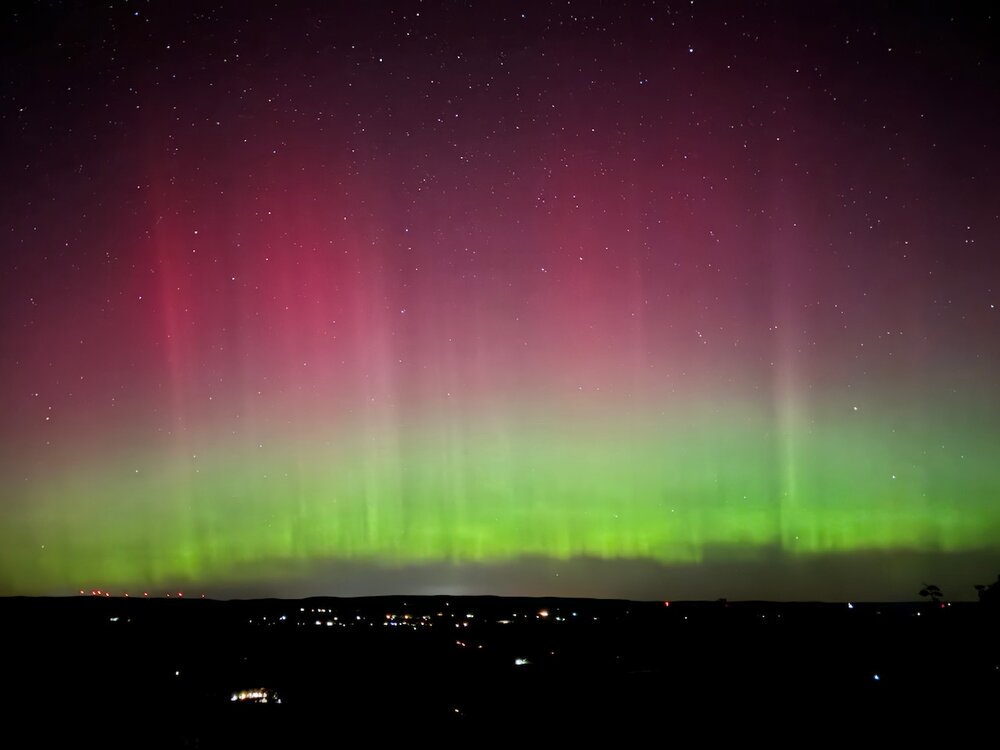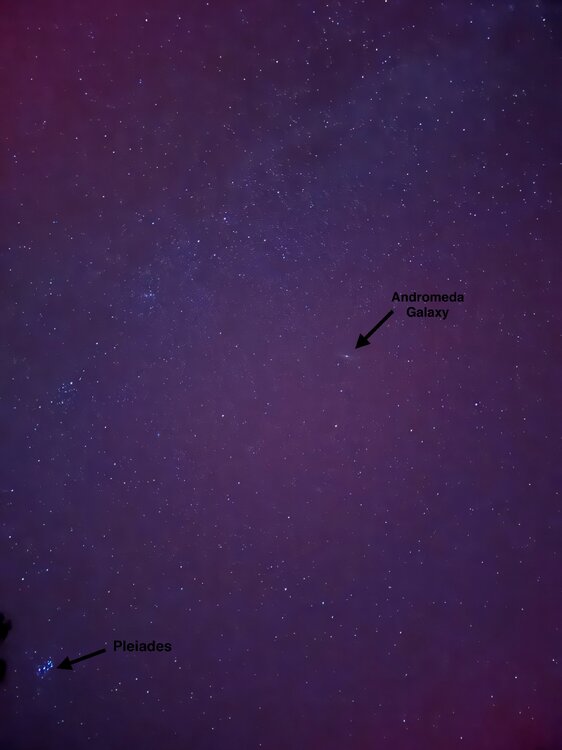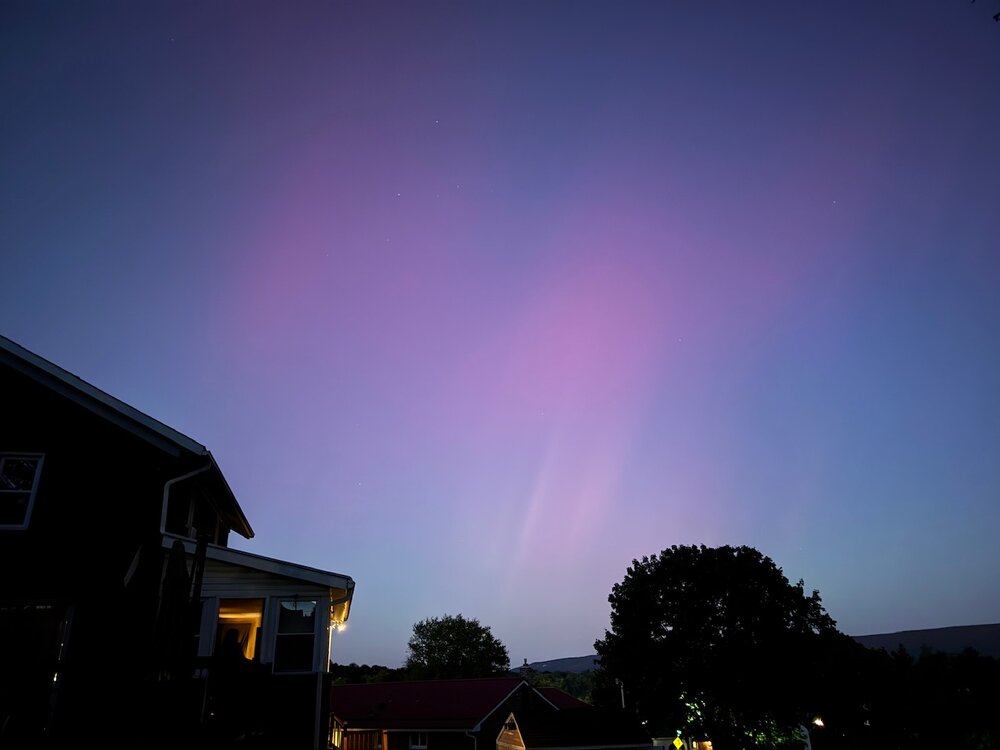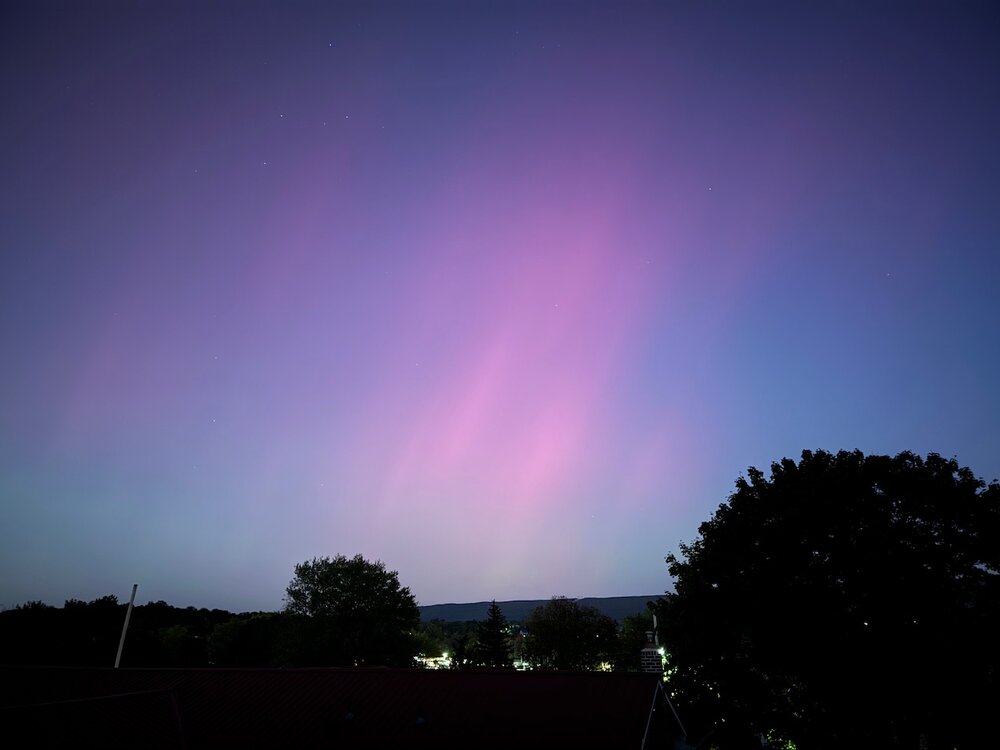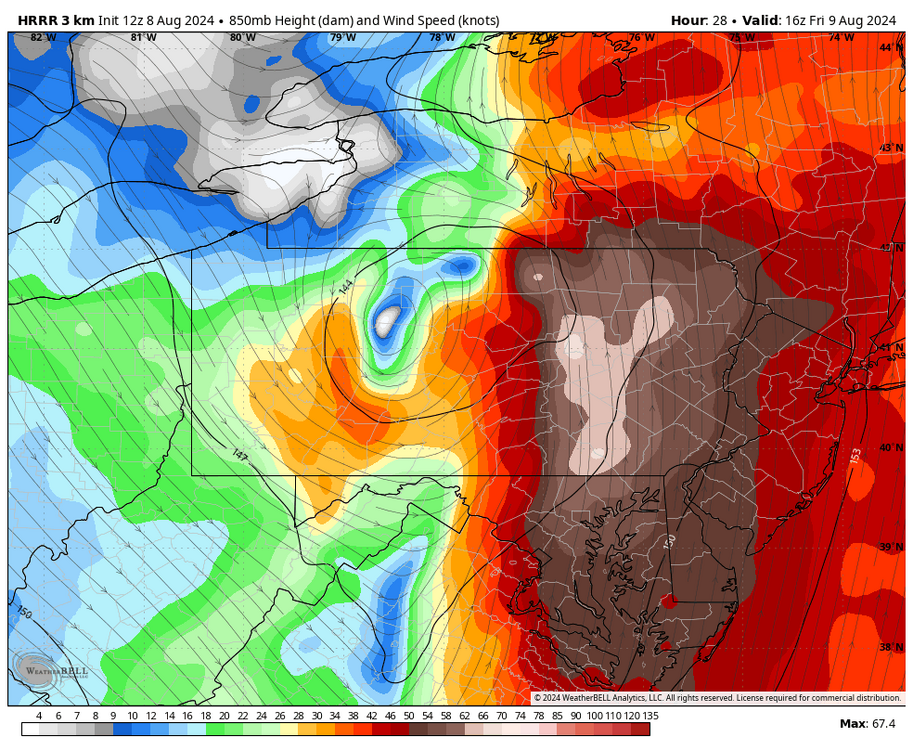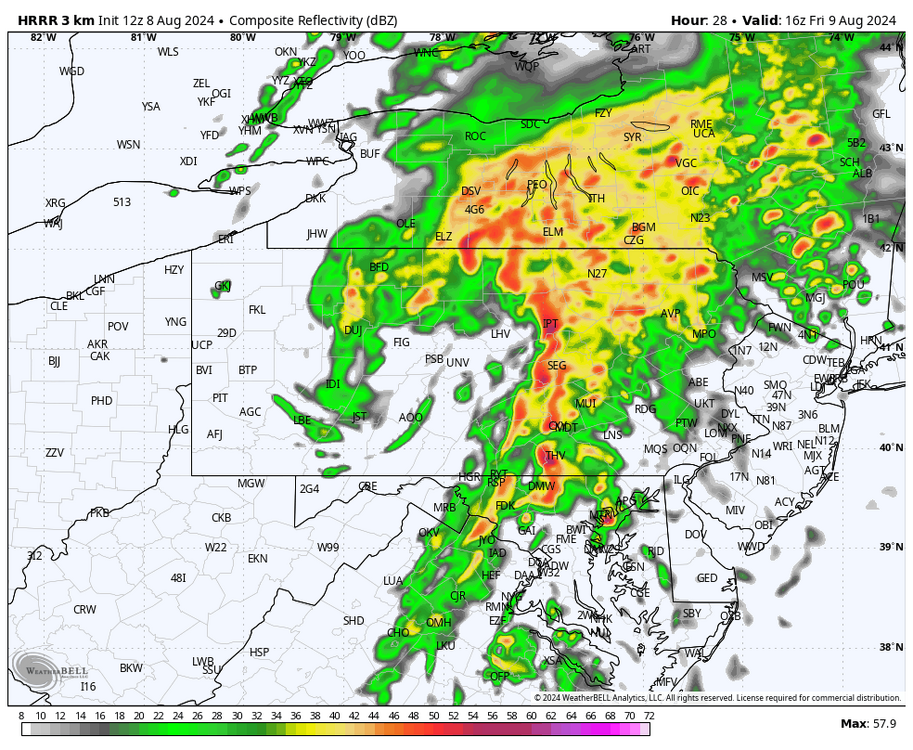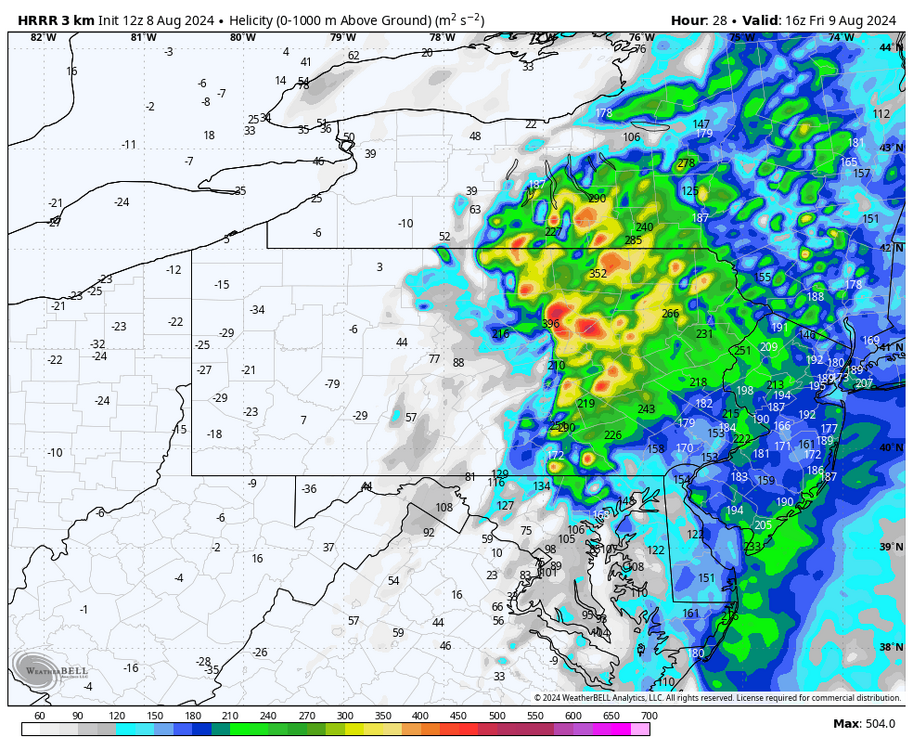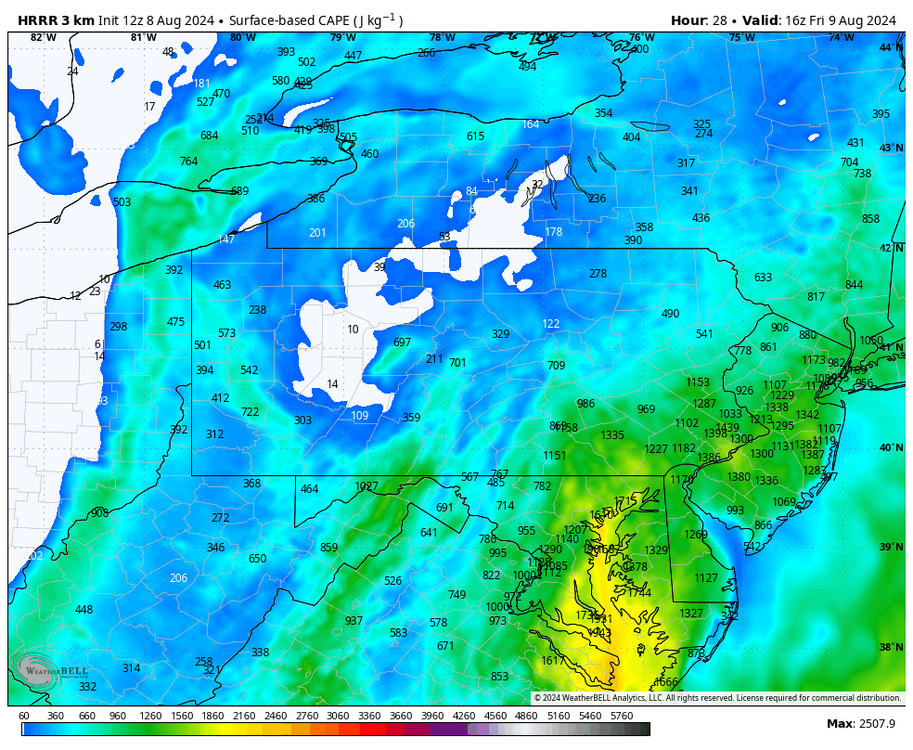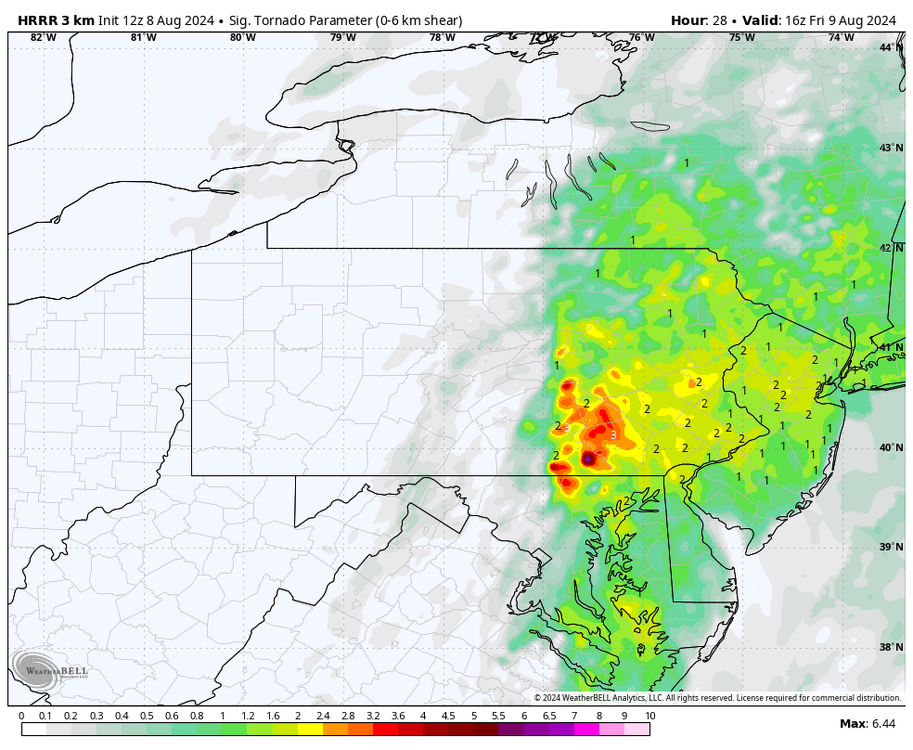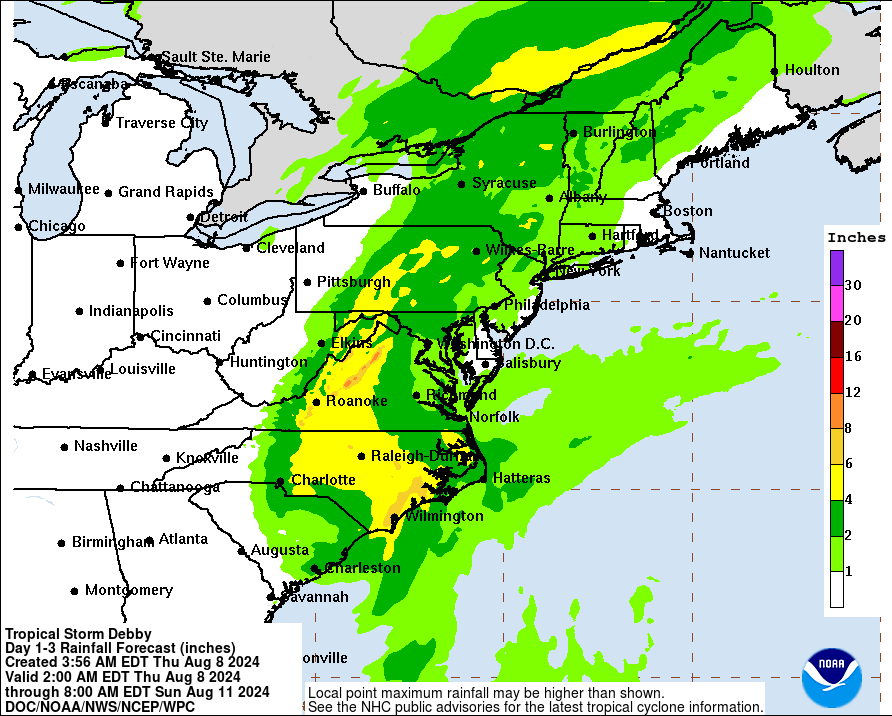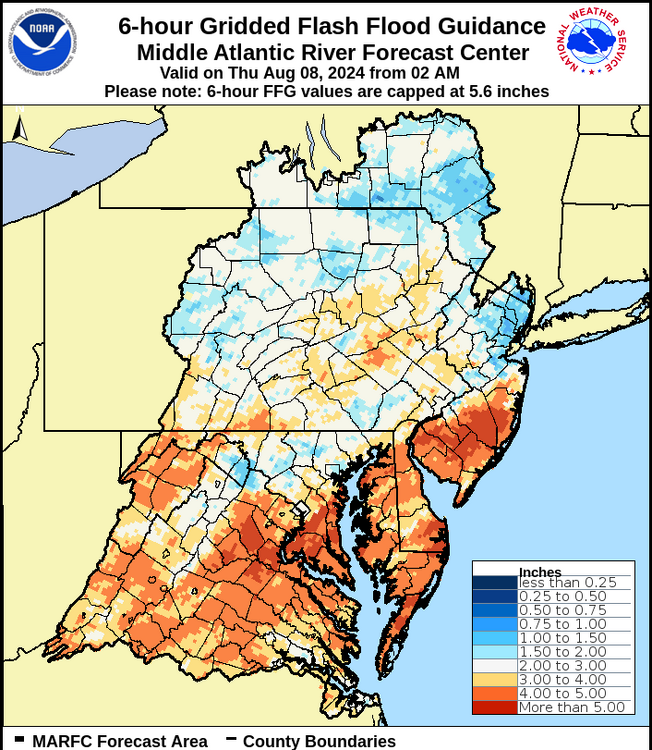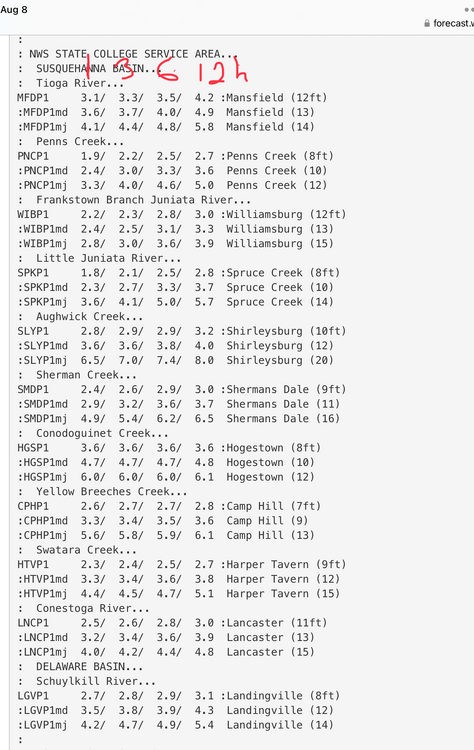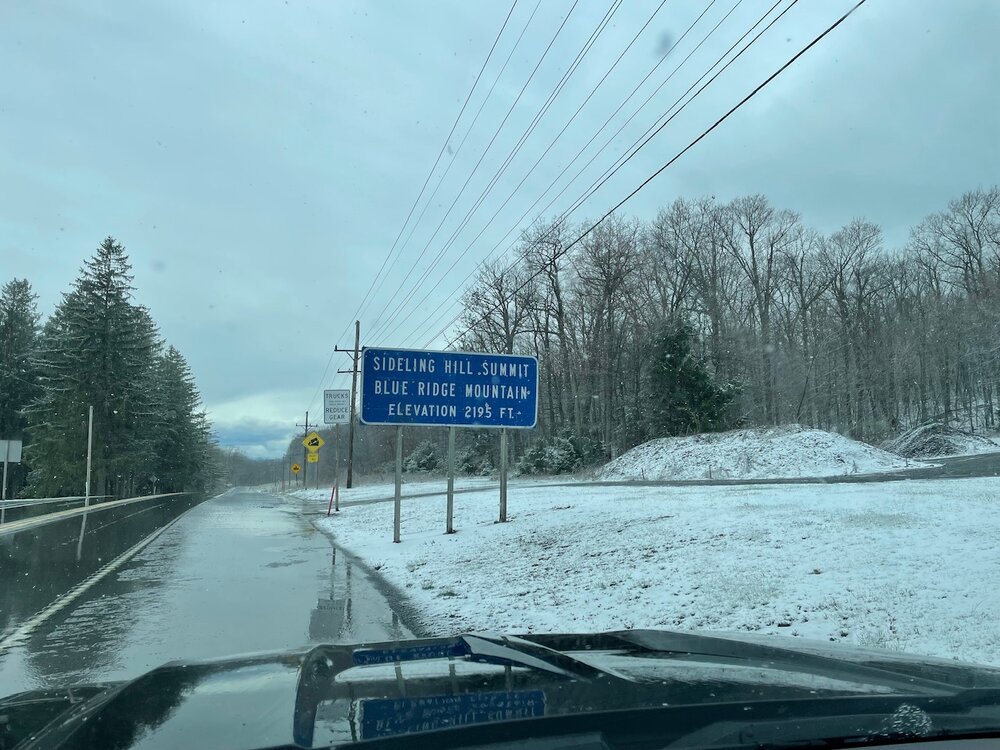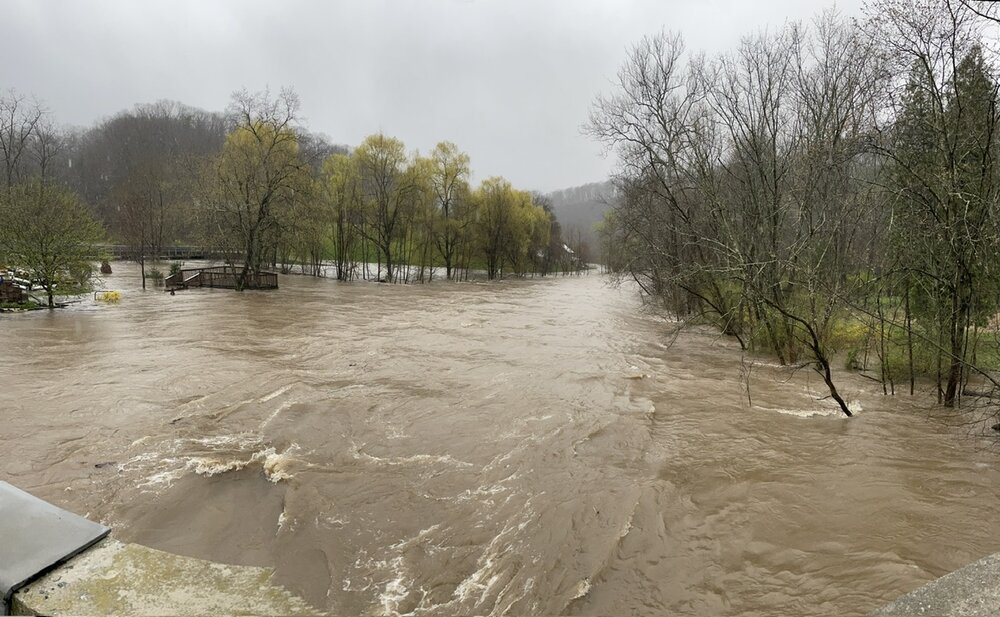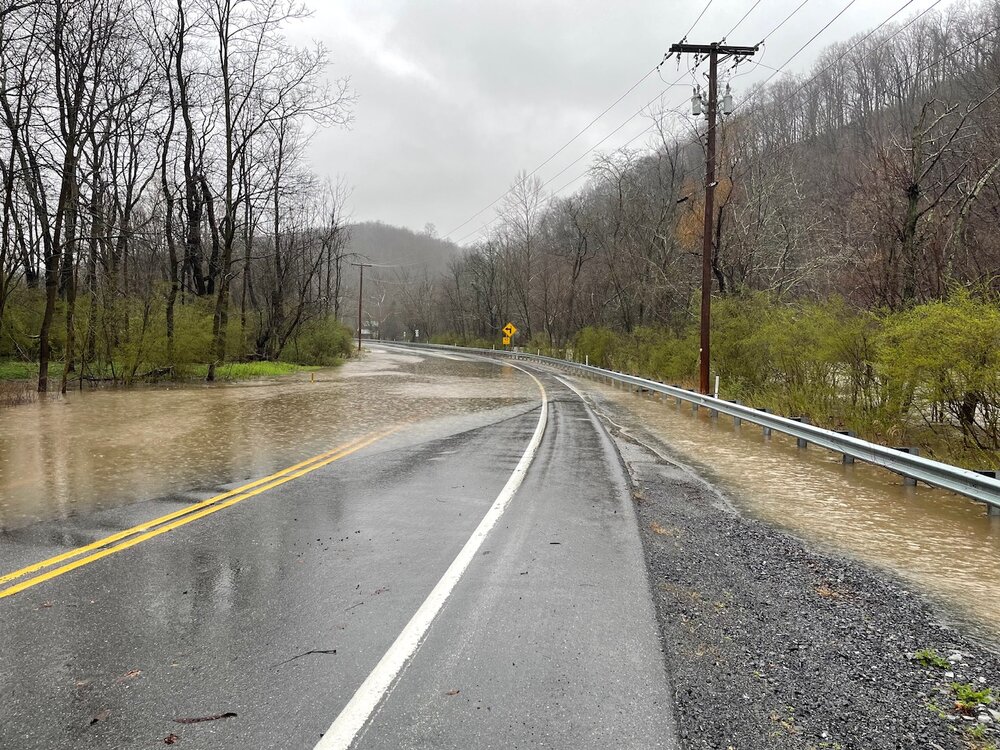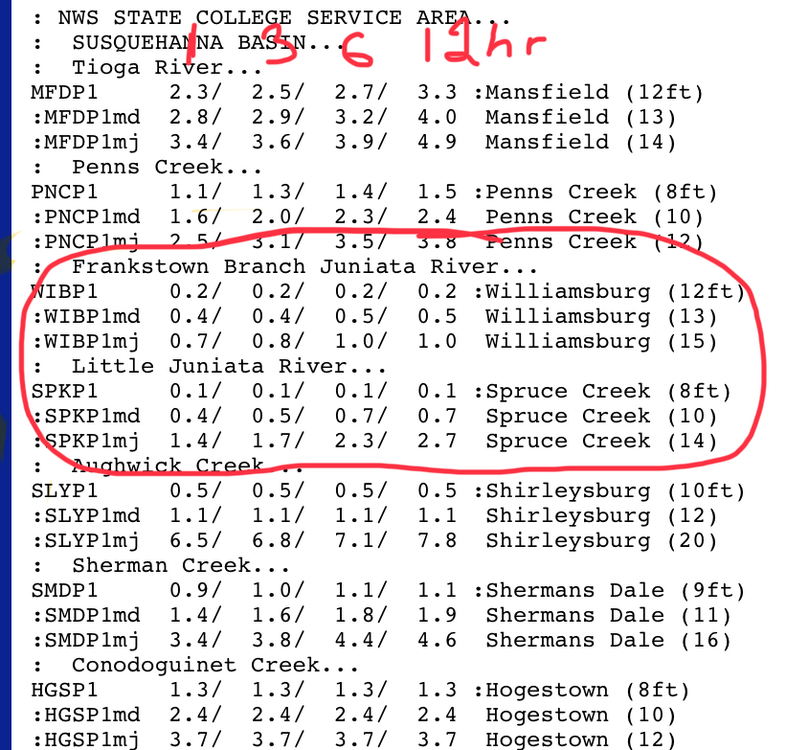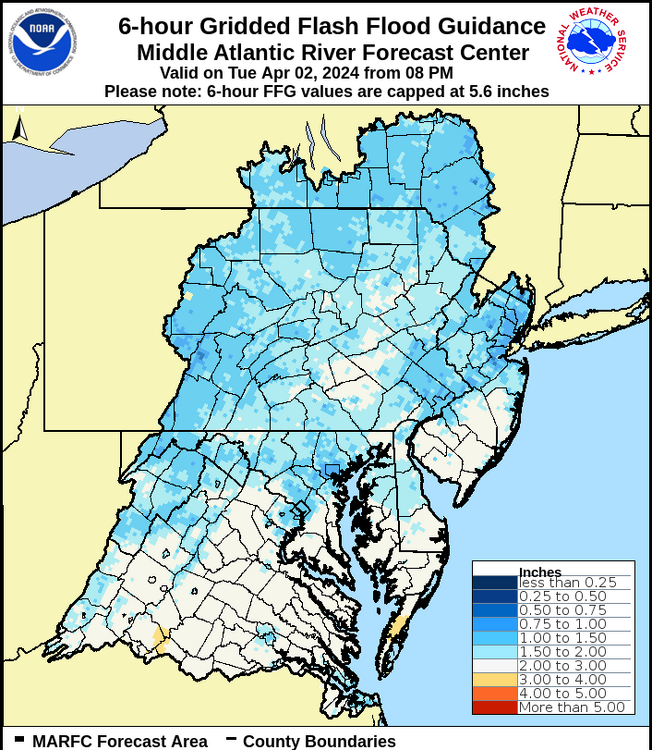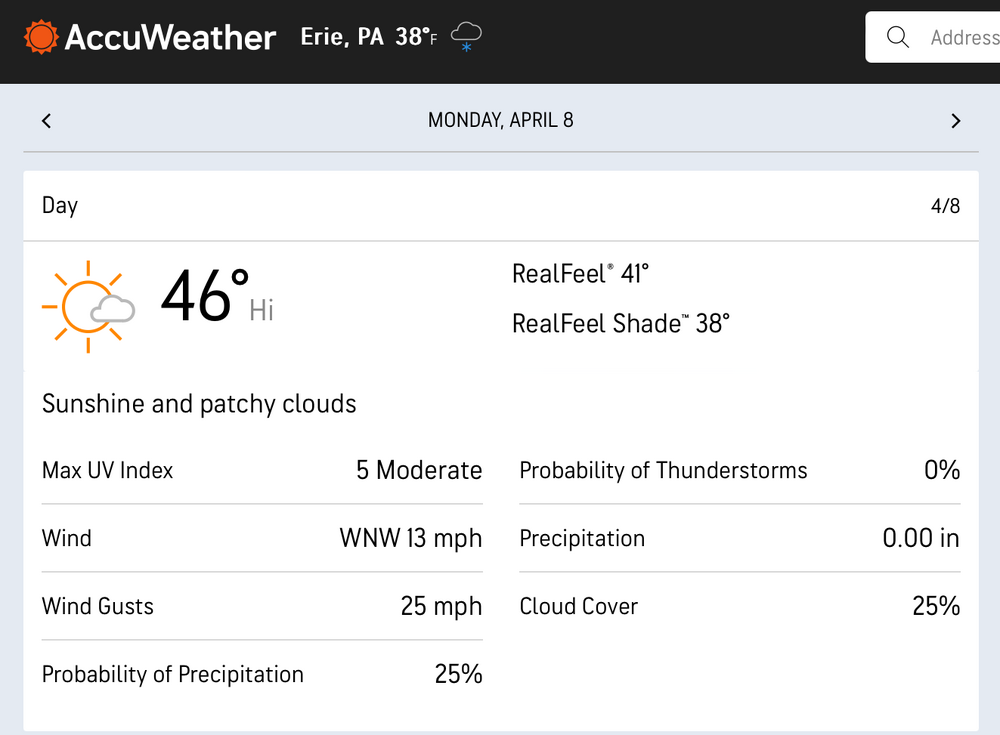
MAG5035
Meteorologist-
Posts
5,937 -
Joined
-
Last visited
Content Type
Profiles
Blogs
Forums
American Weather
Media Demo
Store
Gallery
Everything posted by MAG5035
-
Up to 0.48” on the event so far here. It’s been awhile since we’ve had a 44ºF synoptic rainfall. While we’re going to need a couple decent rain events to start to address the longer term hydro issues in areas that have been under more significant drought conditions (mainly in the SW and SE parts of the state)… this rain should put an end to what had been a very high wildfire threat not often seen around here. The combo of the near record to record dry October and the remaining dead leaves falling/dying or dead forest undergrowth really made a unique setup for having several bigger wildfires which were likely mainly caused by careless burning this past week with the windy/dry weather. I’m eyeing some more wholesale changes to the weather pattern in the 11/20-25 range as we get towards Thanksgiving week. Way out there yet but modelling has been showing variations of a more significant weather system/amplifcation in that timeframe perhaps ushering in the first stretch of more wintry temperatures and perhaps first flakes. The pattern does at least look more active in the meantime as well, with one or two rain chances showing.
-
KAOO appears to have already eclipsed its daily record of 78ºF set back in 1950 (topped 79ºF a bit ago). UNV’s daily record also set in 1950 is 81ºF and it’s “only” been about as high as 77ºF so far today so that one may still be safe. Here at the house it’s been as high as 79ºF and currently at 78ºF. Quite breezy today as well.
-
The potential of that is on the table. Certainly the opening 10+ days of the month look very warm…probably to the point where it’ll be hard to reverse what will likely be sizeable + departures even if we have a normal or colder than normal regime set up later on in November. We need a major shakeup in things to get the ball rolling toward some kind of a different pattern. We’ve had frontal passages and such but not any kind of major systems so far this fall that could be a catalyst to driving a more meaningful pattern change.. hence the persistent lack of rainfall here and the relatively stagnant pattern. Not really seeing a change in that status quo on modelling currently. MJO poised to make an 8-1-2 run, which figures to keep the tropics alive for potential late season activity in close near the US from that realm. Even with that, the mid latitude pattern doesn’t really look too conducive to yanking something like that up to juice up some kind of major system either. Eventually that change will come, but how long it takes will determine whether a really warm front part of November turns into the warmest one overall.
-
Absolutely incredible viewing tonight. From the top of Tussey Mountain (NW Huntingdon Co) in Rothrock State Forest the aurora and its colors were easily viewable with the naked eye. With the moon having set earlier you couldn’t have asked for better sky conditions. Pics were taken about an hour ago. iPhone 15 Pro with 3-10 second exposure and no edits. I also got good videos of it moving and pulsing. f
-
I was just about to post, the aurora is already visible here. Gonna be a fantastic night to view it.
-
A lot of times a weakening storm won’t do as well at tapping the winds aloft to the surface, especially with dying or disorganized convection around the core. A deepening storm with explosive convective development are where you see the very high winds aloft translated to the surface efficiently. Every major hurricane is kind of unique in what it ultimately does in terms of wind/surge impact and how widespread the impacts are. Currently, the wind field of Milton is very confined.. owing to an extremely tight pressure gradient to go with its exceptionally low pressure. The 5pm advisory estimated the hurricane force wind field out only 25 nautical miles from the eye in all 4 quadrants, and 40 nautical miles for >50kts. TS force winds on 3/4 quadrants are 70-80nm with the NW quadrants out to 120nm. If this storm were impacting Florida right now in its current state, there would obviously be extreme damage and surge where the core of the storm impacted, but the absolute worst would be really confined. A “weaker” hurricane of this nature becomes a larger one. Instead of the extremely tight pressure gradient we have now, that pressure field expands and hence expands the wind field. When this is getting to the FL coast it could be one of those cases of maintaining a very low central pressure (for example a high end cat 4 pressure), but not necessarily focused cat 4-cat 5 winds. With that type of structure change could come a much larger field of weaker (but still destructive) hurricane force winds.. which would boost storm surge potential over a much bigger area along with the wind damage impacts. Time will tell how this eventually evolves with it’s structure, and if the forecast shear can weaken this more than expected in a better case scenario.. but this needs to be taken very seriously anywhere where there’s mandatory evacuations. The angle of attack of this coming eastward into the west coast of FL is a very bad one regardless when it comes to surge.
-
Have a feeling Steelers/Cowboys has a good chance at getting a lightning delay either prior to kickoff or early in the game with the incoming line of storms.
-
There certainly hasn’t been any kind of prolific rain rates, but today is the ninth consecutive day of recording measurable rainfall here… totalling 3.2” since 9/23.
-
Boy that was quite a sustained period of 2”+ per hour rates there. I had nothing like that rate wise, a lot of the time being under half an inch per hour and only a couple times it was briefly over an inch per hour (1.4/hr max rate). That saved this local area from seeing any real significant flooding issues this morning. My event total was still pretty much right at 3”, which was much needed here since I’ve missed just about every storm that has fired up nearby in the last few weeks. Despite all the rain last night and this morning, the yard is still solid enough for a mow with the sun out… maybe after the humidity drops. It’s cracked 80 here and the dewpoint is still about 73ºF.
- 6,666 replies
-
PDS wording being used in the flash flood warning (emergency) statement issued a bit ago for Potter/western Tioga.
- 6,666 replies
-
It seems the heaviest rain has shifted away from here but still moderate rates, which will likely linger for most of the morning. I’m at 2.92” so far for the event. Been breezy at times this morning, with a 31 mph gust registered about an hour ago. Wind shift occurred right around then as well.. from northerly to southeasterly. Gonna be heading out to see if there’s any local flooding issues. In my immediate backyard though this was a much needed rain and I didn’t register any excessive rates on the gauge overnight. This seemed modeled well by the HRRR from yesterday, when I had made my severe weather threat post. And that seems to be coming to fruition this morning in the Sus Valley with a main band with embedded severe winds/potential spinups and torrential rains. Mesoanalysis has the remnant low centered in Somerset County currently. Definitely ended up west of the NHC forecast track from this time yesterday.
- 6,666 replies
-
- 1
-

-
Steady rain has arrived here. 70/70°F
- 6,666 replies
-
It’ll depend on the track of the remnant low. If it follows what the NHC has for its track via the 8am advisory then best severe parameters likely would be just east of the Sus Valley. Most modelling I’ve looked at so far this morning though, global and high res, seem to have the remnant low of Debby tracking thru true central or even west central PA.
- 6,666 replies
-
- 1
-

-
I’m kind of surprised SPC doesn’t have much in their outlook tomorrow for severe in Eastern PA. I feel like there’s a half decent severe threat (of the slight risk variety at least) for winds and brief spin ups. Using the new 12z HRRR here centered on 16z (noon) tomorrow, which I’ve noticed has really sped this event up. Simulated composite Radar: Screaming winds aloft at 850mb Very high helicity/shear, as per usual on the eastern side of a landfalling tropical system Modest but not excessive CAPE: Significant Tor parameter, which incorporates the shear and the CAPE So my interpretation is that the potential is there for severe issues for sure, especially if the HRRR take on having more of a distinct band/squall line is correct. CAPE is limiting factor on actually having cells capable of “significant tornadoes” but the parameter is spiked because of the very high low level shear/helicity. So I feel anything embedded in a band (or bands) will have the capability to bring some of the high winds aloft and potentially spin up some brief tornadoes. Didn’t include it with all the maps but even the 925mb wind speeds are modeled to be 50+ knots in the Sus Valley late morning tomorrow. Wouldn’t take much to mix it down. As mentioned before the HRRR looks faster with the progression than say the NAM. Could be too fast but it is a thing with TC remnants to move along once they’re interacting with a frontal boundary. That could be a limiting factor capping high end rain totals where the remnant core passes thru.
- 6,666 replies
-
- 3
-

-

-
Some maps of note this morning. Updated flash flood guidance (6hr) Updated Susquehanna Basin Headwater guidance Of particular concern locally I have is with the Little Juniata and Frankstown branches of the Juniata River. These tributaries have some of the most attainable numbers for moderate and major flood categories and they’re colocated with the modeled passage of the remnant core of Debby, where these 3-5” totals are most likely (and likely most of that coming within 6-8hrs). I’ve personally had only 2.3” of rain in the last 30 days, with only 1.25” falling in the last 2 weeks… but 5-10 miles from here has been a completely different story with last Saturday and Tuesday having storms that have dumped 2-3” both times in the areas that cover a good part of the basins of those two tributaries.
- 6,666 replies
-
- 1
-

-
Still a good bit to be determined with regards to now Hurricane Debby’s eventual track/progression into the southeastern US and presumably further up the eastern seaboard this week. The certainty at this point is that this is likely to be an extremely prolific rainmaker in FL/GA/SC/NC. Most guidance tries to bring Debby back out into water off the GA/SC coast before making a second landfall, and then becomes the issue of what it does after that. There’s no real strong trough diving down to pick this up or anything, so it will be slow moving/meandering for a good portion of the week. I suspect the most likely scenario is it eventually gets drawn up the east coast late in the week in some fashion as generally suggested by the Euro/Canadian/ICON, etc. The GFS has been basically sending Debby directly back where it came from after it emerges off the GA coast and then stalling further towards AL and the FL panhandle. A possibility but probably a less likely scenario. In terms of eventual direct C-PA impacts. The Euro suite (op/ensemble/AI version) currently seem most supportive of the more traditional tropical remnant swath of precip tracking thru a fairly sizable portion of C-PA (best chances for bigger totals in the Sus Valley portion). The GFS/GEFS despite its unusual tracking would still eventually draw up significant moisture into PA anyways but not the remnant low itself. In the meantime we have a shortwave rounding the top of the ridge that will provide shower/thunderstorm chances centered on Tuesday night, as the ridge is centered west this week and we are positioned on the rim. This additionally could provide a swath of heavier rainfall somewhere in C-PA in the form of a more organized cluster of storms. This feature also probably figures to influence Debby’s track in some form as well, likely drawing her track back NW. But at the least, this feature provides the best chance of rain this week for western and central PA, where the current probabilities of significant rain from Debby’s remnants are less than that of the eastern third.
- 6,666 replies
-
- 6
-

-

-
Been on a pretty rough run here at the IMBY level, if something fires up around here the last few weeks it finds a way to miss. 0.08” on the day and 0.46” last 7 days.
- 6,666 replies
-
- 1
-

-
Sorry I haven’t posted much lately, I usually am busier during the spring and summer months but this year I’ve been especially so and haven’t had much of a chance to post. But otherwise all is well. It has definitely been hot enough haha. I’ve already had about 12 days of 90+ this summer to date here at home, with a max of 95ºF (twice) and several other days that were 88-89ish. Probably a fall breeze compared to some of the LSV this summer but definitely hot for this area. Only about 0.6” in rain since 6/28 and 0.44” of that came on 7/3. Hopefully that changes this week.
- 6,666 replies
-
- 3
-

-
In my travels today this was Sideling Hill summit on route 30 in Fulton County. A little bit after 3 this afternoon.
-
Still some lingering rain falling. Temps are also falling, now back to 39ºF. Event total rainfall here is now 5.08” since Sunday Night. There has been plenty of flooding issues today and closed roads. Frankstown Branch of the Juniata now cresting just inside major flood stage around 15.5 feet at the Williamsburg gauge. Little Juniata is receding, having crested mid-late afternoon in moderate flood stage at about 10.7 feet. Here was some pics I got just a little bit downstream from the Little Juniata @ Spruce Creek gauge around the time of it’s crest.
-
2.3” was the daily total at midnight. Already 0.67” since midnight. Flooding issues of the small stream and poor drainage variety are occurring again. Another significant wave of rain on the doorstep.
-
Approaching 2.0” for the day (1.98”) and 2.71” for the event. I’m legitimately concerned for flooding in the local tributaries around here given the new headwater guidance this evening and the amount of rain forecast to fall yet thru tomorrow. There were already some issues today and the Little Juniata had already edged above flood stage early this evening for a bit. The Frankstown Branch is highly likely to get to major, and the Little Juniata has a shot at major too, but certainly a moderate range crest looks increasingly likely. Both branches with that kind of response would likely mean issues on the main Juniata thru Huntingdon and Lewistown. Here’s the updated overall FFG for 6hrs in the MARFC coverage area.
-
Raining heavily currently. Total for just today is already up to 1.7”, with 0.71” falling Sun Night into Mon morning.. bringing the event total to 2.41” already. I anticipate some flooding issues around here, especially with more periods of rain to come through tomorrow.
-
-
About an inch of snow fell here overnight, the biggest such snowfall since all the way back on 2/17.

